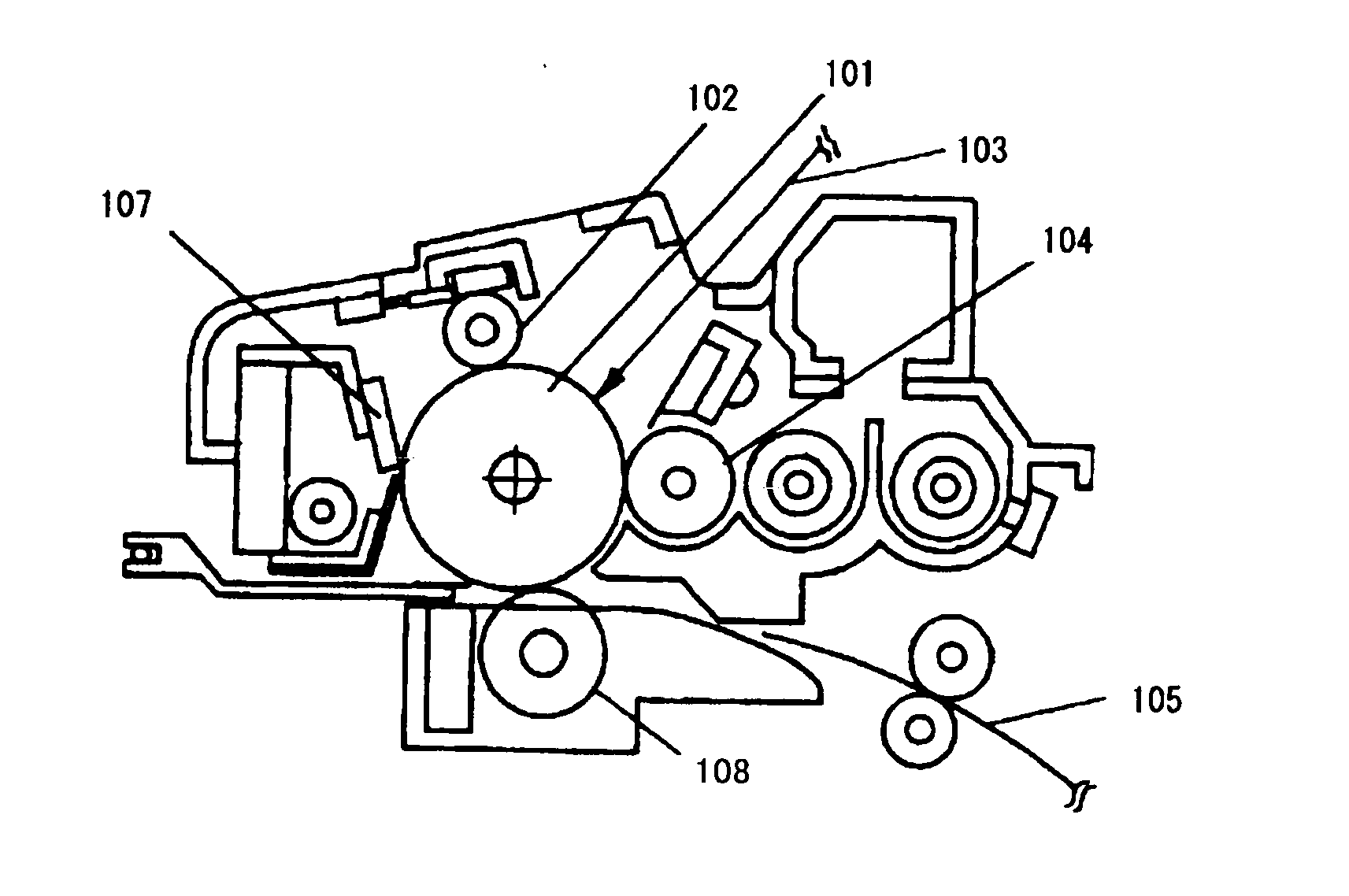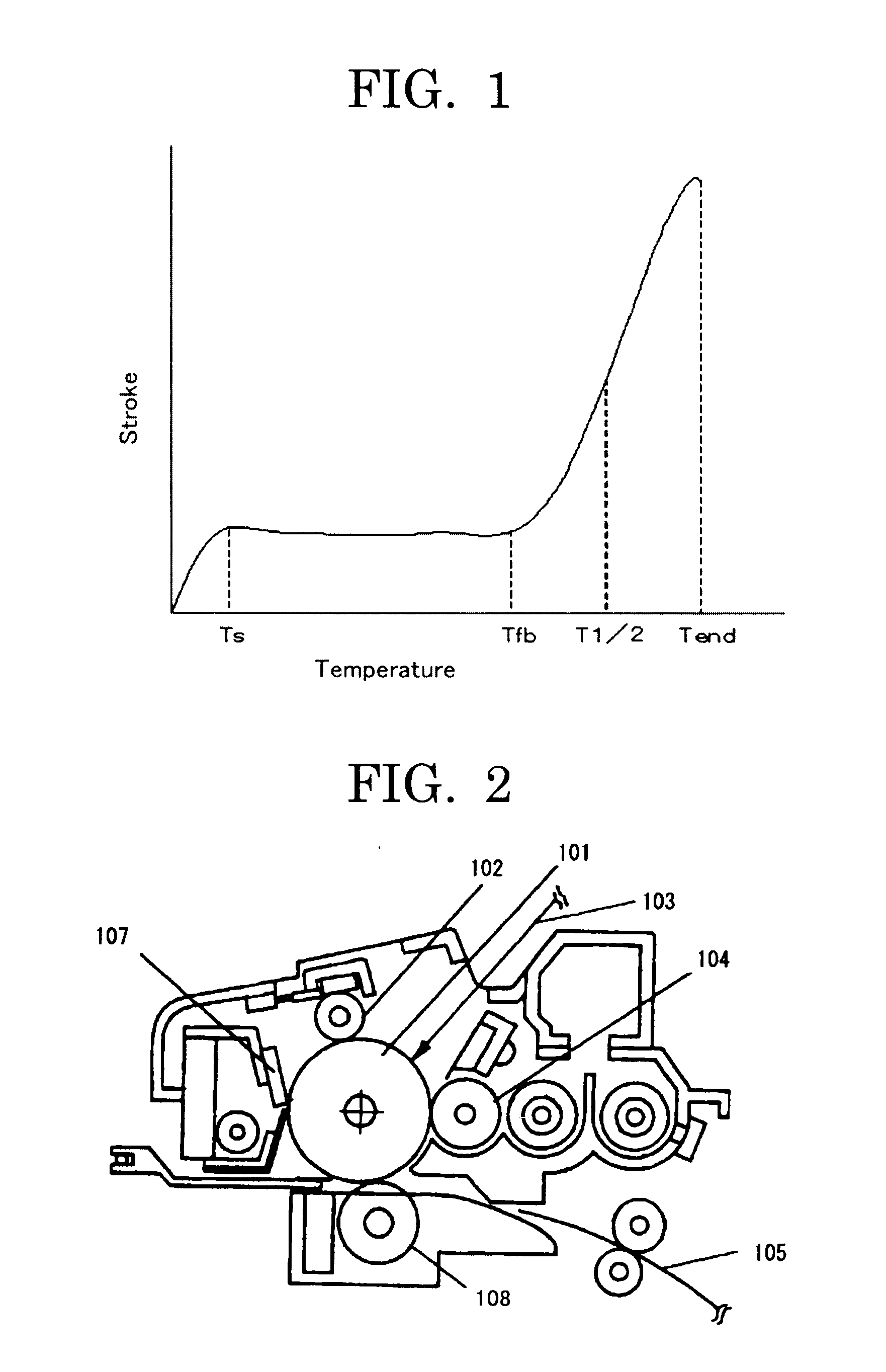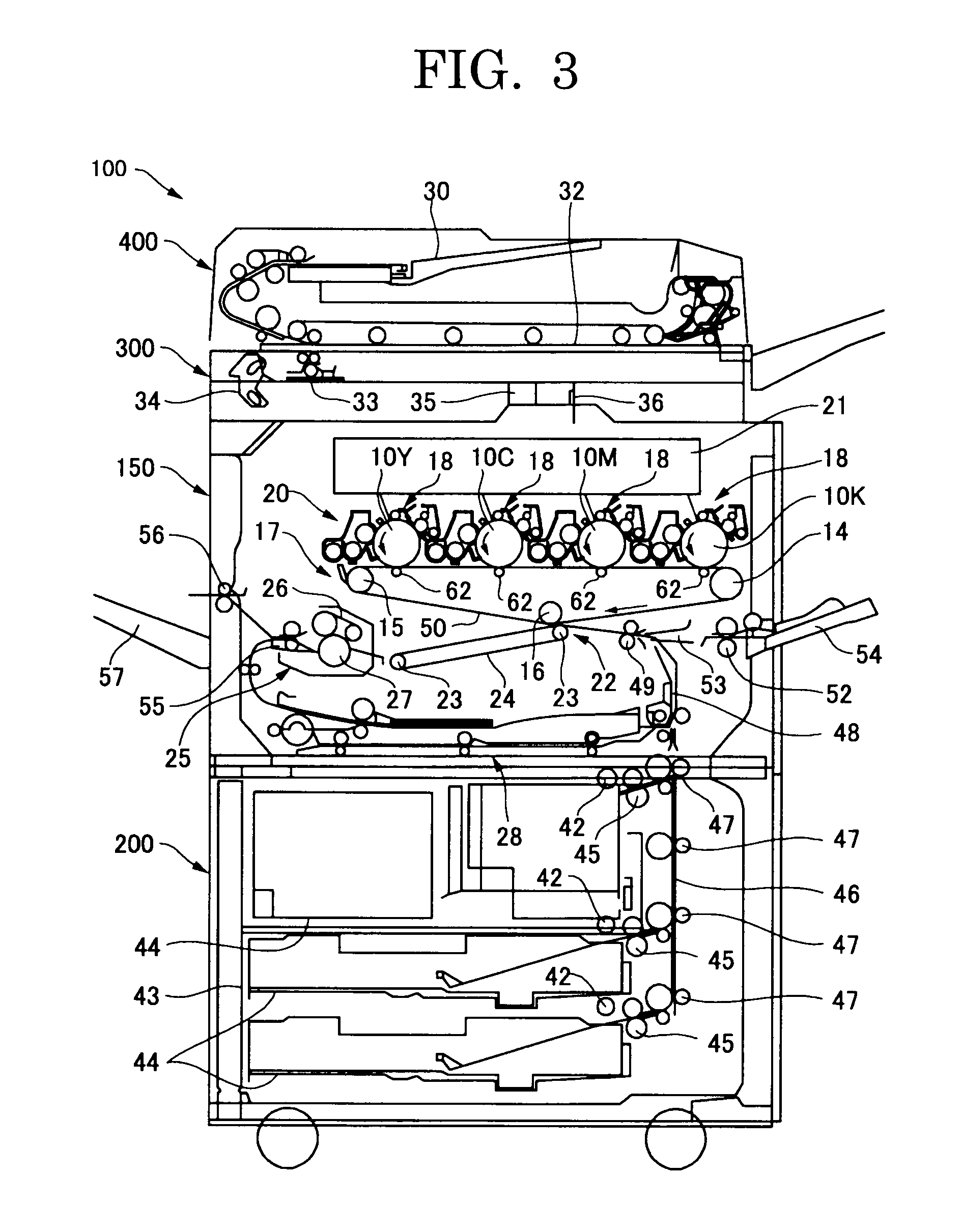Toner
- Summary
- Abstract
- Description
- Claims
- Application Information
AI Technical Summary
Benefits of technology
Problems solved by technology
Method used
Image
Examples
production example 1
—Preparation of Wax Dispersion Liquid—
[0340]Into a reaction vessel equipped with a stirring rod and a thermometer, 378 parts of the unmodified polyester resin, 110 parts of Wax A-2, 66 parts of the wax dispersant, and 947 parts of ethyl acetate were charged, heated to 80° C. with stirring, held at 80° C. for 5 hours, and cooled to 30° C. for 1 hour, to thereby obtain Wax Dispersion Liquid 1.
[0341]Wax Dispersion Liquid 2 was obtained in the same manner as in Wax Dispersion Liquid 1, except that Wax A-3 was used.
[0342]Wax Dispersion Liquid 3 was obtained in the same manner as in Wax Dispersion Liquid 1, except that Wax A was used.
[0343]Wax Dispersion Liquid 4 was obtained in the same manner as in Wax Dispersion Liquid 1, except that Wax A-4 was used.
[0344]Wax Dispersion Liquid 5 was obtained in the same manner as in Wax Dispersion Liquid 1, except that the amount of the wax dispersant was 44 parts.
[0345]Wax Dispersion Liquid 6 was obtained in the same manner as in Wax Dispersion Liqui...
example 1
—Preparation of Organic Solvent Phase—
[0353]A raw material solution was obtained by mixing 2,493 parts of Wax Dispersion Liquid 1, 500 parts of the masterbatch and 1,012 parts of ethyl acetate for 1 hour.
[0354]Then 1,324 parts of the raw material solution was moved into a reaction vessel. Subsequently, using a bead mill (ULTRA VISCOMILL, manufactured by AIMEX CO., Ltd.), the raw material solution was passed three times under the following conditions so as to disperse the carbon black and the wax: the liquid feed rate was 1 kg / hr, the disc circumferential velocity was 6 m / sec, and 0.5 mm-zirconia bead packed to 80% by volume. Subsequently, 1,324 parts of a 65% of ethyl acetate solution of the unmodified polyester resin was added to the obtained dispersion liquid and passed through the bead mill once under the conditions described above, to thereby prepare an organic solvent phase.
[0355]The organic solvent phase had a solid content concentration of 50% under the measurement conditions...
example 2
[0372]A toner of Example 2 was produced in the same manner as in Example 1, except that in the preparation of the organic solvent phase Wax Dispersion Liquid 1 was replaced with Wax Dispersion Liquid 2. The toner of Example 2 had Dv of 5 μm and Dv / Dn of 1.15.
PUM
| Property | Measurement | Unit |
|---|---|---|
| Temperature | aaaaa | aaaaa |
| Length | aaaaa | aaaaa |
| Length | aaaaa | aaaaa |
Abstract
Description
Claims
Application Information
 Login to View More
Login to View More - R&D
- Intellectual Property
- Life Sciences
- Materials
- Tech Scout
- Unparalleled Data Quality
- Higher Quality Content
- 60% Fewer Hallucinations
Browse by: Latest US Patents, China's latest patents, Technical Efficacy Thesaurus, Application Domain, Technology Topic, Popular Technical Reports.
© 2025 PatSnap. All rights reserved.Legal|Privacy policy|Modern Slavery Act Transparency Statement|Sitemap|About US| Contact US: help@patsnap.com



